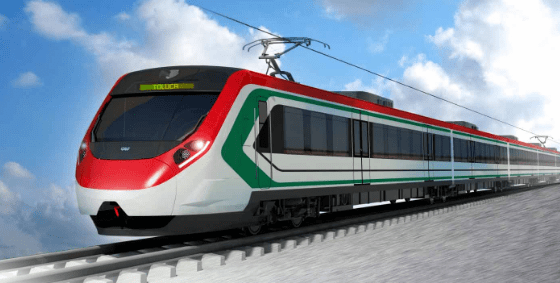The Mexico-Toluca Interurban Train will be completed in December 2023, according to the federal government of Mexico.
First of all, the Ministry of Communications and Transportation (SCT) announced in November 2017 the construction of the Interurban Train, which will run the 58 kilometers from Mexico City to Toluca, the capital of the state of Mexico.
But construction was suspended from January 10, 2018 to April 24, 2018 due to litigation related to compensation for land use rights.
Then, on December 12, 2019, the Ministry of Communications and Transportation resumed the construction of the Interurban Train.
Thus, the project is now expected to be completed and operational by December 2023.
Interurban train Mexico-Toluca
The Cost-Benefit Analysis of this work, released in November 2013, indicates that the urban growth disorder that has been generated must be contained and solved.
Thus, the areas located to the west of Mexico City have shown significant growth, invading the ravines and centering their development on the so-called “ribs” and landfill land in the west of the city.
This development has not led to the proper penetrations from the west to Mexico City, which have been basically limited to four roads: Av. Constituyentes (1), Av. Reforma (2), Av. Vasco de Quiroga/Santa Fe (3) and the recently opened Autopista del Poniente (4).
While these four roads present little possibility of expansion under the current cross sections and occupation of the adjacent areas, the solution of this represents significant amounts of investment given the limitations of the right of way and orography of the area.
In addition, the same analysis describes, the most important real estate development area in Mexico City and probably the country is collapsed due to the lack of alternatives to access the city’s transport systems, as well as to provide enough space to to house the parking of vehicles that access the areas of high real estate development in the west (Santa Fe, El Pantalón, Interlomas).
Problematic
Another reason in favor of the Mexico-Toluca Interurban Train: public transport solutions have not been implemented in the area and an agile movement of the more than 60,000 person / day trips that are only generated between the Santa Fe area is not guaranteed. and Observatory.
For this reason, the document states that the last mass transport actions in the western area date from the late 1960s, with the construction of the Observatorio station and the eastern bus terminal.
Although the requirements for expanding the Metro Collective Transportation System (STC Metro) to the west of the Observatorio station were not raised in its 1997 Electric Trains Master Plan due to the orographic characteristics of the area.
The profusion of commercial and real estate developments in this area since 1989 and more intensely since the 2000s, requires your review and attention in order to address the notorious gap and existing need for transportation in the area.
Estado de Mexico
For its part, the Toluca Metropolitan Area presents a problem of urban expansion with a low population density (47.6 inhabitants/ha), which is partly due to urban development with low regulation in the face of pressure from the 22 municipalities that comprise it for generating rights and resources through real estate development figures.
Thus, the City of Toluca has three main connections with Mexico City: The Mexico-Toluca Highway (Tollocan), Av de las Torres to the east and the Naucalpan-Toluca Highway to the northeast.
Although the Paseo Tollocan has a very wide cross section (120m, average) with three lateral and three central lanes, as well as a right-of-way used by rail freight transport and a wide and beautiful linear park, it is unlikely that it will be allow an expansion in the road section given the particular characteristics of said walk in terms of the environment and image of the city.
The land use in the corridor is imminently industrial with consolidated industries of great significance since the 60s and 70s, but which has managed to maintain a positive urban image and this linear park has been consolidated as a local landmark that is difficult to affect.
A second alternative for access to the east of the City of Toluca is Av. De las Torres, which crosses the City of Toluca from east to west through its southern portion.
This road has an enormous potential for land use planning and densification that could follow transport-oriented urban development schemes.
![]()

